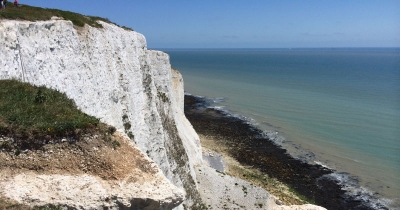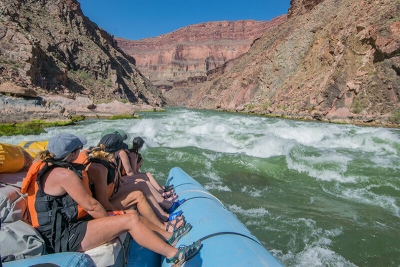Where is White Cliffs of Dover located?

The famous White Cliffs of Dover stand guard at the Gateway to England. Millions pass through Dover each year on their journey to or from the continent. In some places over 300 feet high, the White Cliffs are a symbol of the United Kingdom and a reassuring sight to travellers. The Cliffs have been immortalised in song, in literature and in art.
On a clear day you can see right across from the Dover cliffs to the cliffs on the French coast at Cap Gris Nez, proof of the continuous strata of chalk.
Around seventy million years ago this part of Britain was submerged by a shallow sea. The sea bottom was made of a white mud formed from the fragments of coccoliths, which were the skeletons of tiny algae which floated in the surface waters of the sea. This mud was later to become the chalk. It is thought that the chalk was deposited very slowly, probably only half a millimetre a year, equivalent to about 180 coccoliths piled one on top of another. In spite of this, up to 500 metres of chalk were deposited in places. The coccoliths are too small to be seen without a powerful microscope but if you look carefully you will find fossils of some of the larger inhabitants of the chalk sea such as sponges, shells, ammonites and urchins.
Since the time of the chalk sea, the chalk has been lifted out of the water by movements of the earth's crust. Most of the shaping of the beautiful chalk downlands we see today took place during the last Ice Age. The latter part of the Ice Age also saw the invasion of chalk by the English Channel. The consequence of this was that Britain became an island.
Credit : Dover Museum
Picture Credit : Google
